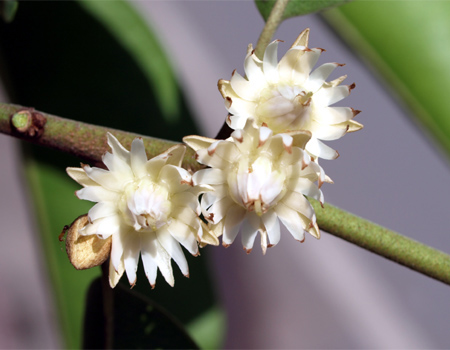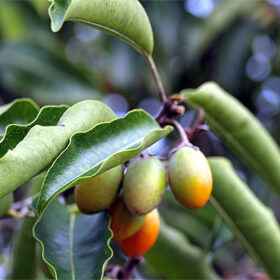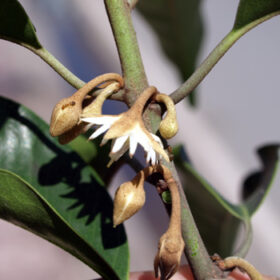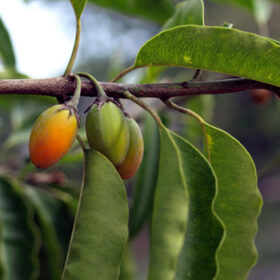Description:
An evergreen tree reaching a height of 20 meters and a diameter of 50 cm. The outer bark is grayish-brown and fissured into nearly rectangular sections; the inner bark is reddish-pink and exudes white latex. Leaves are simple, alternate, and ovate-shaped, measuring 10-13 cm in length and 5-6.5 cm in width. They have a blunt tip and a slightly rounded base, and are initially pubescent (covered in hairs). The lateral veins number 10-14 pairs. The leaf stalk (petiole) has a groove on the upper side, and is 1.5-2 cm long. Flower clusters are borne in axillary bundles, with long, hairy stalks. The flowers have 8 sepals, which are pubescent on the outside. The petals are smooth, with 8 lobes. There are 8 stamens; the filaments are short, and the anthers have 8 locules (chambers) and are hairy. The style is thread-like. The fruit is a yellow, egg-shaped berry containing one seed, and is 2-2.5 cm long.
Distribution:
- Global: India, Myanmar, etc.
- Vietnam: Found in the Central Highlands, within evergreen or semi-deciduous forests, preferring deep, fertile, and moist soils.
Flowering and Fruiting:
Flowers bloom in the summer and autumn. Fruits ripen in December.
Uses:
The wood is dark red, very hard, and valuable, with a density of 0.810. Its tensile strength perpendicular to the grain is 25 kg/cm², compressive strength parallel to the grain is 480 kg/cm², and modulus of rupture is 1437 kg/cm². The shrinkage coefficient is 0.54. The wood is used in construction and for high-quality furniture. The tree’s attractive shape makes it suitable for landscaping and is widely planted along the streets of Ho Chi Minh City for ornamental and shade purposes.




